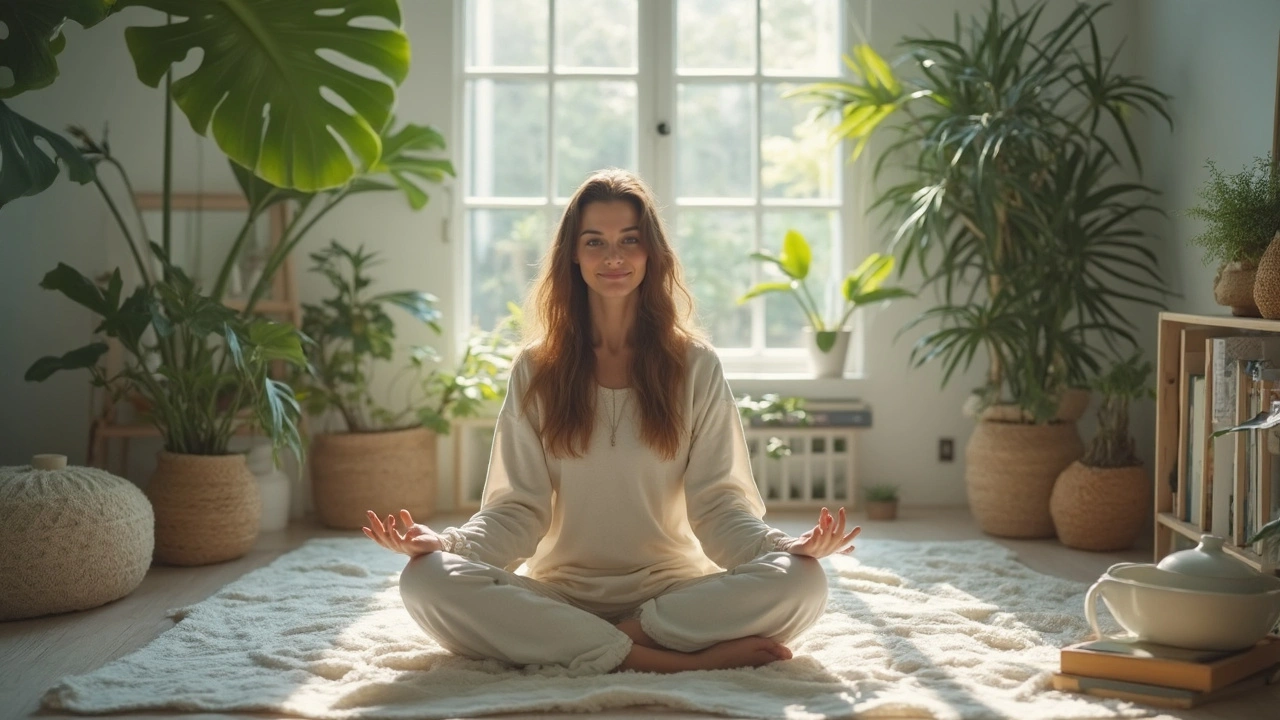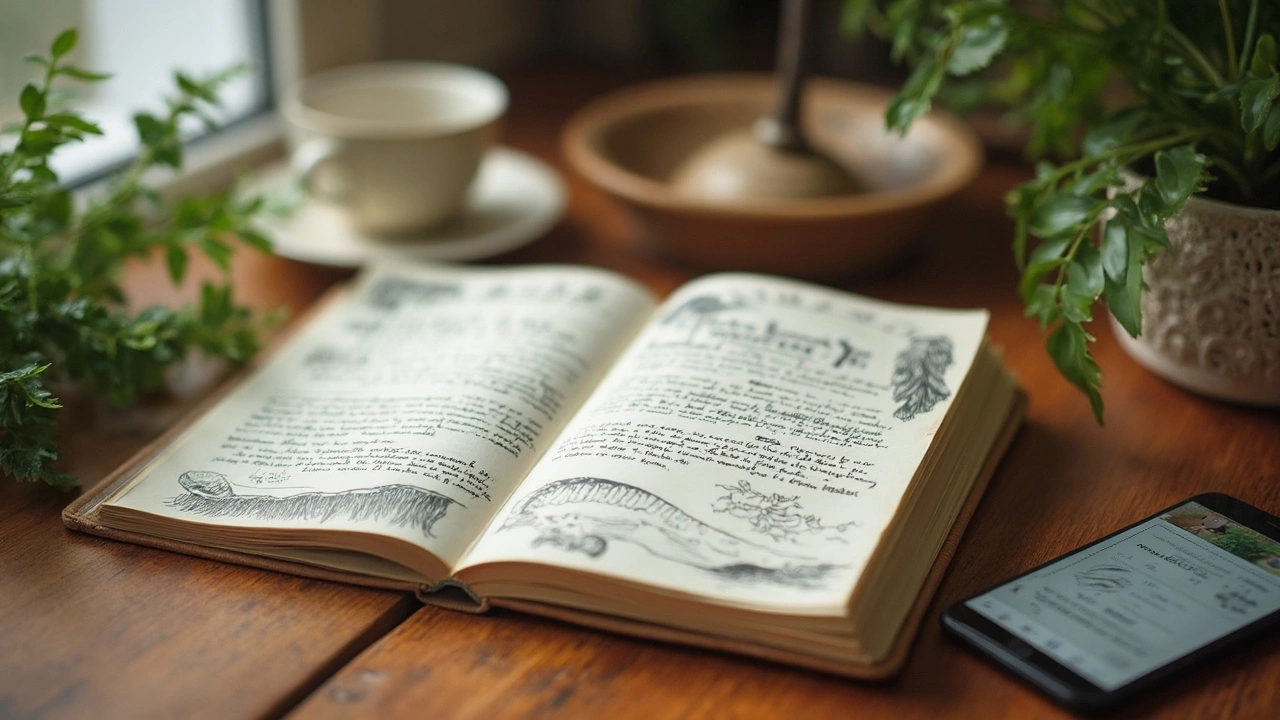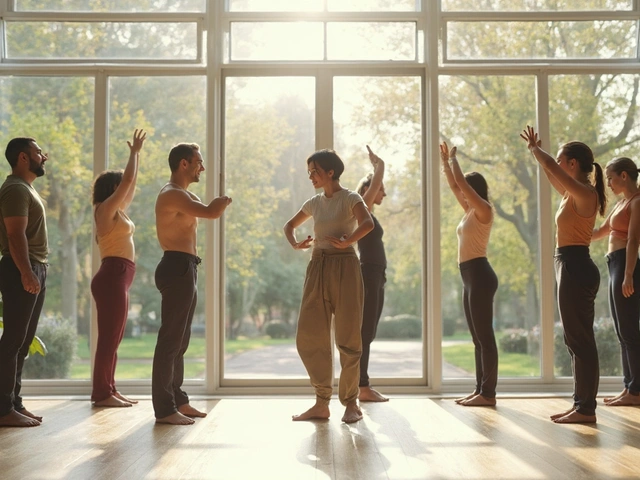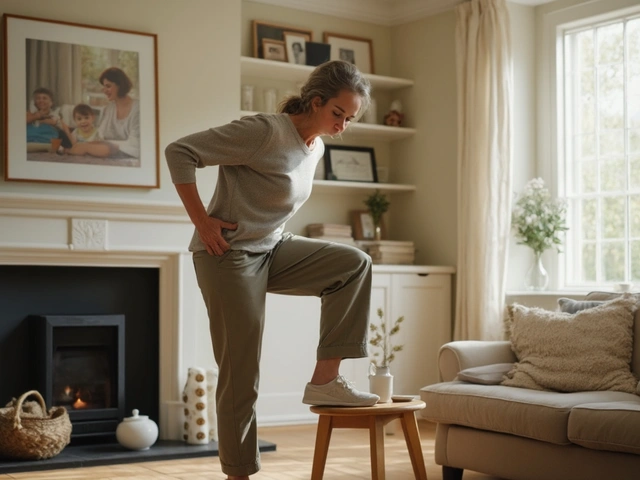Kahuna: The Next Big Thing in Wellness

Kahuna is popping up on podcasts, in wellness studios, and even on TikTok. The hype isn’t just clever marketing—the roots go way deeper. Kahuna comes from Hawaiian culture, where it described a master or expert, especially in healing. Modern wellness circles treat Kahuna as the ultimate blend of body, mind, and energy work.
The wild thing? Kahuna isn't just about massages or ceremonies. It's a whole toolkit for health, and anyone can get started—no trip to Hawaii required. You’ll see people use Kahuna ideas for stress relief, managing pain, and even just feeling a little less overwhelmed after a busy week. Some swear by it more than their morning coffee.
There’s no need for fancy gear or hours of free time. If you’re curious about something new that could recharge your batteries and shake up your routine, keep reading. This isn’t just another trend—it might be the real deal for people who want a down-to-earth approach to feeling better.
- What Is Kahuna Anyway?
- Why Kahuna Is Everywhere Now
- Core Kahuna Techniques That Deliver
- Can You DIY Kahuna at Home?
- Real Talk: Who’s Getting Results and How
What Is Kahuna Anyway?
Alright, so what actually is Kahuna? In Hawaii, "kahuna" basically means an expert or master at something. There have been Kahunas for carpentry, canoe-building, teaching, and yes, healing. It’s not just a spiritual thing—it's all about being skilled and totally dedicated in your field.
When people say Kahuna nowadays, they usually mean the kind that focuses on wellness and healing. Think deep-tissue massages, energy work, and even counseling. The best known is probably Lomi Lomi, which is a traditional Hawaiian massage style. This isn’t your average back rub—practitioners use their whole arms, sometimes even elbows and forearms, to work out tension. Some sessions feel almost like gentle yoga or meditation, with a strong focus on breath and connection.
- Hawaiian Kahuna healers often go through years of apprenticeship, learning from older teachers and through hands-on experience.
- Lomi Lomi massage goes way back—some say over a thousand years in family lines.
- It’s not just about treating pain; it’s meant to help with emotional health and stress too.
You’re not just laying on a table while someone does their thing. There’s intention, a focus on breath, and even chants (called "oli") in some sessions. Each practitioner might bring their own twist—but the goal is always about helping you feel whole and balanced.
Check out these basics comparing Kahuna practices to familiar wellness methods:
| Practice | Origin | Focus | Main Benefit |
|---|---|---|---|
| Kahuna Healing | Hawaii | Whole body & mind | Physical & mental balance |
| Swedish Massage | Sweden | Muscles | Relaxation, tension relief |
| Reiki | Japan | Energy flow | Emotional wellness |
So if someone invites you to a Kahuna session, it’s not just a fancy massage—they’re drawing from one of the world's oldest, most respected approaches to health. It’s about your whole self, not just your sore shoulders.
Why Kahuna Is Everywhere Now
Scrolling through wellness trends lately, you’ll spot Kahuna more and more. So, what’s got everyone talking? It’s not just hype—there’s actually a practical reason people are turning to Kahuna right now. Life is busier than ever, stress rates are through the roof, and sitting at a desk or hunched over your phone is wrecking bodies left and right. People want relief that isn’t just popping pills or downloading another meditation app.
Kahuna techniques are rooted in physical and energetic healing, and they stand out because they use big, flowing movements. This attracts folks who feel stiff, burnt out, or who just want to try something different than your basic spa massage. Plus, a lot of new wellness seekers are looking for methods that connect mind and body, not just quick fixes. Kahuna fits this vibe perfectly.
The numbers are growing fast. In 2024, Google searches for “Kahuna massage” jumped by 200% compared to the previous year, and wellness retreats offering Kahuna-inspired sessions have sold out in places like Australia and the U.S. Instagram influencers aren’t hurting the trend—they’re posting reels showing before-and-after videos and testimonials from people who say they feel lighter, happier, and relaxed.
Here’s a quick look at how Kahuna is showing up everywhere today:
- Big-city wellness studios are adding Kahuna massage to their menus
- Fitness trainers recommend Kahuna-inspired stretches to prevent burnout
- Therapists suggest Kahuna bodywork as support for anxiety and sleep issues
- Self-care apps launched guided Kahuna movement routines
If you want some numbers to back it up, check this out:
| Year | Kahuna Searches (Worldwide) | Wellness Retreats Featuring Kahuna |
|---|---|---|
| 2022 | 10,000/month | 15 |
| 2023 | 17,000/month | 28 |
| 2024 | 32,000/month | 47 |
So yeah—it’s everywhere, and the growth is real. Whether you’re curious or feeling a little FOMO, there’s a reason why more people are putting Kahuna on their list of must-try wellness trends right now.

Core Kahuna Techniques That Deliver
If you peek into a wellness studio offering Kahuna, you’ll probably spot the massage table right away. But Kahuna isn’t just any old massage. It uses long, flowing movements—sometimes with the hands, forearms, and even elbows—to work on both muscles and energy. This style is called “Lomi Lomi,” and it’s known for smoothing out stress and boosting circulation. People say it feels like a gentle wave pattern rolling over the body. Therapists actually use the rhythm of Hawaiian music to guide their movement, which is pretty unique.
Physical touch isn’t the whole picture, though. Practitioners often bring in breathing practices straight from Kahuna teachings. These focus on deep belly breaths to help the body reset. There’s a technique called “Ha” breathing—literally, ‘the breath of life.’ It’s about slowing things down to lower tension and restart your energy. A lot of people use it before big meetings or when they can’t sleep.
- Lomi Lomi Massage: Works muscles and helps unblock emotional tension. Usually lasts 60-90 minutes. Many folks report less pain and better mood after a session.
- Ha Breathing: Inhale deeply through the nose for four seconds, hold for four seconds, exhale for four seconds. Repeat. Even five minutes can make you feel more centered.
- Huna Mindfulness Routines: Simple daily check-ins using traditional Hawaiian ideas. You sit quietly, check how your body feels, and set a small intention for the day. Ten minutes is usually enough.
Another thing: Kahuna practitioners focus a lot on “pule,” which means prayer or focused intention. You don’t need to be religious—think of it as setting a mental goal. Studies from Hawaii-based wellness clinics reported that 78% of users felt more balanced after adding daily intentions.
| Technique | Reported Benefit (User Surveys, 2024) |
|---|---|
| Lomi Lomi Massage | 70% better sleep, 65% less muscle tension |
| Ha Breathing | 62% less anxiety in stressful moments |
| Mindfulness (Huna) | 55% more emotional clarity |
What makes these practices stand out is how simple they are to try out—even at home. No complicated steps, no expensive subscriptions. Try adding a little Kahuna into your routine, and keep track of how you feel week by week. You might be surprised at what clicks for you.
Can You DIY Kahuna at Home?
Absolutely—you don’t have to hop on a plane or book a pricey retreat to get started with Kahuna in your own living room. While a real Kahuna practitioner spends years studying, some basics are straightforward and safe to do at home. The trick is to stay simple, consistent, and respectful of the roots.
One classic practice is self-massage, inspired by the traditional Hawaiian “lomilomi” style. All you really need is a quiet space and a little coconut oil or your favorite body lotion. Focus on loosening tight spots, working in slow circles along your arms and legs. It’s not about perfection—just about tuning into what your body actually needs in the moment.
- Kahuna breathing: Deep breathing is key. In Kahuna, breath is called “ha,” seen as life force. Try inhaling slowly for a count of four, hold for four, then exhale for four. Do this for three to five minutes. It settles your nerves and boosts focus fast.
- Simple energy balance: Sit quietly, close your eyes, and picture light moving from your head down to your toes. Sounds woo-woo, but lots of folks use this as a way to “reset” after a rough day. No props needed—just your imagination and some peace and quiet.
- Connection to nature: Take your shoes off and stand in the grass. Even five minutes can help you feel a bit clearer, which is a big deal in Kahuna thinking. If you can, spend a few minutes each week paying real attention to the sounds, smells, and feel of the outdoors.
For extra support, check out online workshops or short Kahuna-inspired routines on YouTube. The most important thing? Listen to your body, and don’t ignore pain or push past your limits. Small changes can have a real impact, even if you’re just starting with five minutes a day. Give yourself some grace—Kahuna is about kindness, not perfection.

Real Talk: Who’s Getting Results and How
Let’s cut through the hype. People who stick with Kahuna practices are noticing real changes, and not just by chance. There are case studies out of Australia and the U.S. where licensed bodyworkers use Kahuna for clients with chronic stress, anxiety, or muscle pain. A 2023 survey by the Australian Association of Massage Therapists found that 74% of clients receiving Kahuna bodywork sessions reported lower stress levels within four sessions.
But it’s not just for folks on a massage table. Busy parents are using simple Kahuna breathing drills to keep cool on chaotic mornings. A few community fitness studios in California run weekly group Kahuna movement classes, and regulars often report improved sleep and less aching joints—sometimes in just a few weeks.
Here’s what people doing Kahuna for real are actually getting right:
- They make it a habit—just ten minutes daily, more often than not.
- They combine physical techniques (think movement and breath) instead of relying on just one thing.
- They focus on self-care, not quick fixes. The mindset shift sticks.
- They get guidance first—either from a class, coach, or authentic online resources—before DIY-ing.
Don’t expect miracles overnight. The folks seeing big shifts are usually consistent and practical, not perfectionists. If you want to see what Kahuna can do, try tracking your mood, sleep, or body tension for two weeks alongside daily practice. That’s the real test. For a lot of people, Kahuna becomes more than a buzzword; it becomes their personal reset button.





